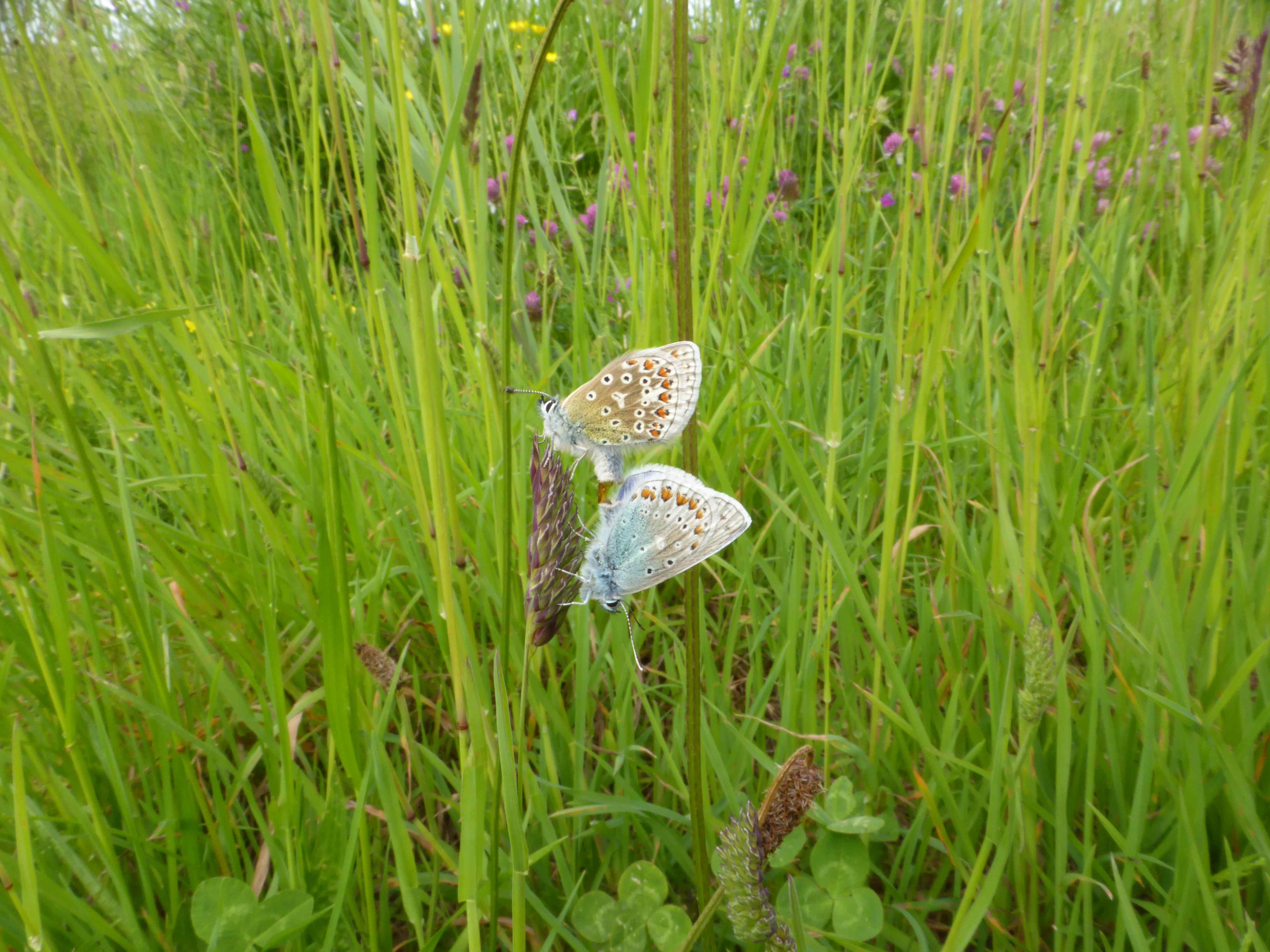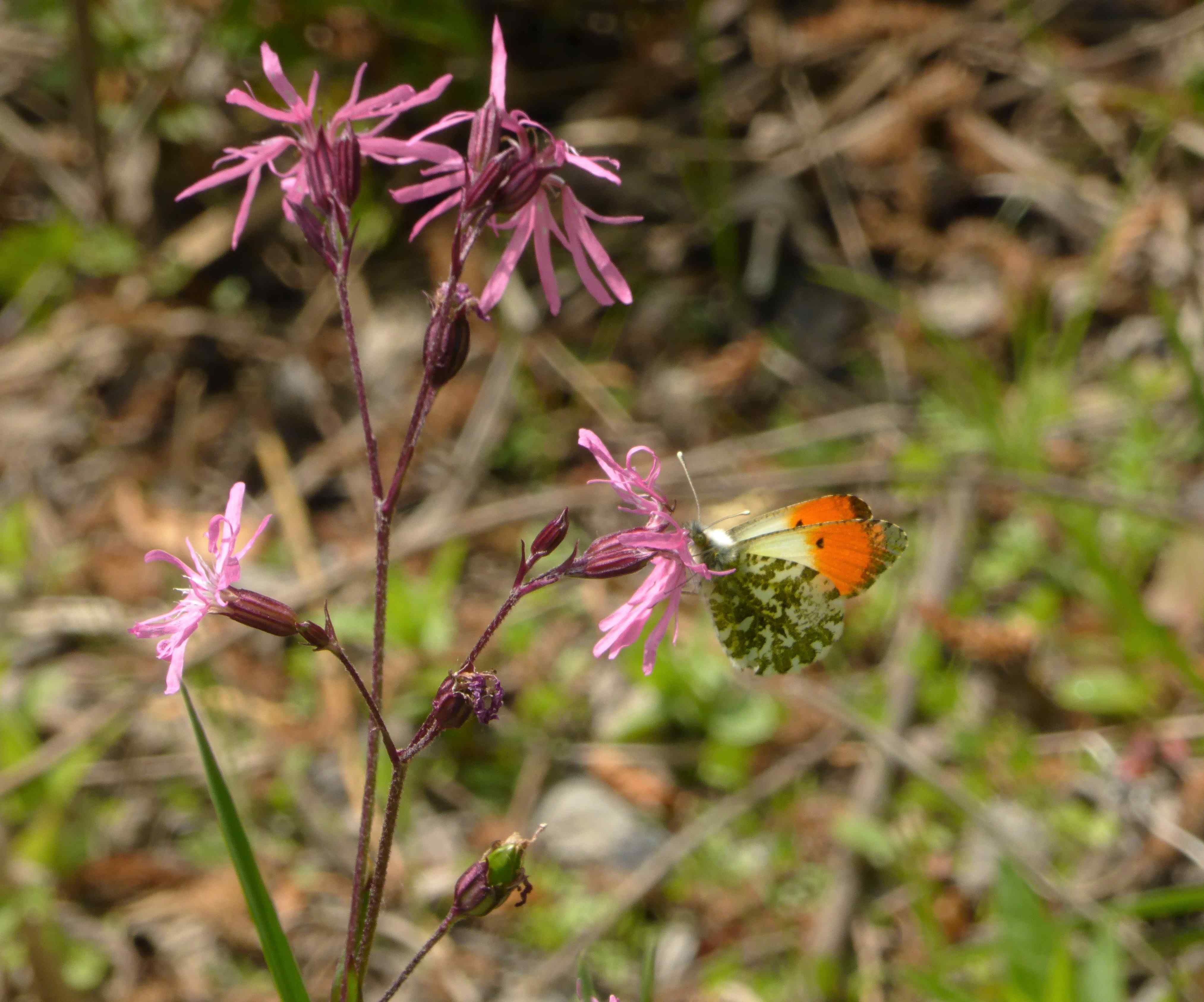Larval Foodplants
 Larval foodplants
Larval foodplants
Actually more important than the nectar plants, for it is these plants, correctly positioned and maintained, that allow the continuation of the species as residents on site - our garden is their habitat.
Nettles (Urtica dioica)
 nettles
nettles
The nettle-feeding butterflies:
.jpg) Red Admiral
Red Admiral.jpg) Small Tortoiseshell
Small Tortoiseshell.jpg) Peacock
Peacock.jpg) Comma
Comma
Many would-be wildlife gardeners are put off from growing nettles in their gardens because of the nuisance aspect of this invasive plant that is certainly hard to control and almost impossible to get rid of. And when you consider that the most flamboyant of the butterflies are the ones that use nettles as larval foodplants, it must dismay these people even more. But there is a myth surrounding this subject which I shall now explode: you DO NOT have to grow nettles in your garden to keep these butterflies with you, because the ones that use them are highly mobile and will utilise nettles growing wild in the neighbouring countryside or wasteland, and still visit your garden for nectar. Only if you really want to see the caterpillars on your own land and the butterflies’ courtship antics do you need your own patches, and even then it may be possible to keep the nettles away from the main garden. In our case, we utilise the ones growing wild on the dyke banks and have few in the actual garden itself. As long as there are nettles somewhere in the vicinity (and I would be very surprised if there wasn’t!) you will get your Tortoiseshells and their allies: the aristocratic Nymphalidae butterflies.
Grasses
 grasses
grasses
The caterpillars of all the Skippers and Browns found in our area are grass-feeding species. From that statement alone it becomes instantly obvious how important grasses are to butterfly populations, especially as other butterflies also use them for roosting. From our point of view they are an absolute nightmare because with our garden being a former field, the grasses are wild grasses: excellent for the butterflies but appallingly difficult to control, especially the couch grass invasion of flower beds. You thought nettles were a problem!
Yorkshire Fog grass is used by the Small Skipper, the Essex Skipper tends to favour cocks-foot grass, as does the Large Skipper. The Wall Brown tends to lay on very sparse grasses. The Speckled Wood and Gatekeeper tend to favour grasses that are sheltered by shrubs or hedgerows. The Meadow Brown and Ringlet are totally unfussy – even laying in flight! Ringlet is perhaps more particular than the Meadow Brown, preferring damper or sheltered areas - the dyke banks are well suited. As yet, the rarer Small Heath remains an occasional visitor, preferring habitats of extremely fine, low cut grasses of the fescue type.
.jpg) grasses 2
grasses 2
Bird’s-foot Trefoil (Lotus corniculatus)
.jpg) Birds-foot trefoil
Birds-foot trefoil
Used by Common Blue, Six-spot Burnet moth, and possibly Brown Argus.
This is a VIP, being a major nectar plant as well. It has nicely spread throughout the site, but most especially on the meadow.
Dove's-foot Cranesbill (Geranium molle)
The recognised foodplant of the Brown Argus, although I suspect bird's-foot trefoil may be used as well.
 Dove's-foot cranesbill
Dove's-foot cranesbill Brown Argus
Brown Argus
Sorrels (Rumex spp.)
 sorrel
sorrel.jpg) Small Copper
Small Copper
Grown purely for the benefit of the Small Copper, sheep’s sorrel remains somewhat sparse on our land, but the taller common sorrel has fast colonised, to boost the erratic Small copper population. The butterflies will also lay their eggs on the seedlings of broad-leaved dock (Rumex obtusifolius) of which there are millions!
Crucifers
 garlic mustard
garlic mustard cuckoo flower
cuckoo flower
These are grown for the Green-veined White and Orange Tip, but are also used by the Small and Large (Cabbage) Whites. The main wild crucifer is garlic mustard, with cuckoo flower sometimes showing in the damper areas. Related to these are the cottage garden favourites dame's-violet and honesty, featured in the nectar plant section.
The CRUCIFERAE family of plants is associated with the brassicas, from which of course the Cabbage Whites feed. Those two butterflies - the Large and Small Whites - will also use these crops as larval foodplants, but it NEVER works the other way round, whereby the Orange Tip and Green-veined White use brassicas. We can't prevent Cabbage Whites from straying into the garden, and in any case all butterflies are welcome here.
 Orange Tip feeding on ragged Robin
Orange Tip feeding on ragged Robin
Alder Buckthorn (Frangula alnus)
 Brimstone in buckthorn tree
Brimstone in buckthorn tree
The main foodplant of the Brimstone but also used by the Holly Blue.
This small tree has been planted throughout the garden primarily as the chief larval foodplant of the Brimstone. (The other recognised foodplant is purging buckthorn – Rhamnus catharticus - of which we planted a couple and they had larvae on them the same season). As far as we are aware there is no Brimstone stronghold in this area, so by planting buckthorns we are certainly doing our bit by attracting this widely roaming species to our land - the females pick out buckthorns from great distances. The irony is that once emerged from the chrysalis in August, the butterflies roam off on their travels, largely ignoring our feast of nectar that we have laid on for them. At least they return each spring for the breeding season. It does seem a kick in the teeth though, and as yet the Brimstone population is never numerous.
Other important larval foodplants
Holly (Ilex) and dogwood (Cornus) for the Holly Blue (and Green Hairstreak if we're lucky!)
Thistles for the Painted Lady. We do not attempt to keep a regular supply of these troublesome plants because of the inability of the butterfly to permanently survive in this country. It is purely a bonus migrant species. They are a classic nectar plant too.
Clover (Trifolium spp.) This abundant plant plays host to the occasional Clouded Yellow that makes its way this far north, plus the Common Blue will readily take to it as well as bird’s-foot trefoil.
Elm (Ulmus spp.) on standby for the White-letter Hairstreak, a repeat of our Derbyshire fame, whereupon we had a strong colony on our elms there. The Comma also uses it in addition to nettles.
Violets on standby for a mini breeding colony of Silver-washed Fritillary.